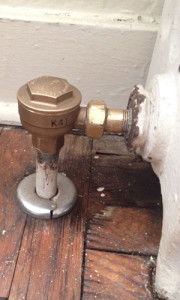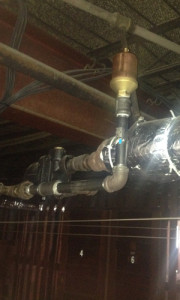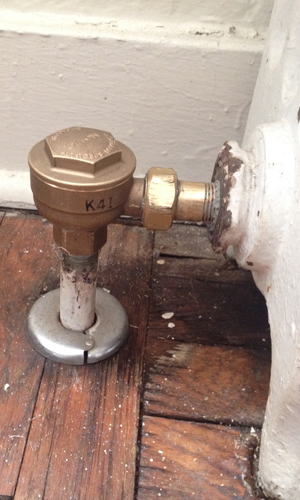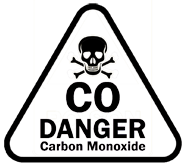
Do you have a steam heating system in your home or a building working with steam traps? Chances are it is a two-pipe system. How do you know? Take at a look at your radiators, if it has a steam trap like in the above picture, then it is a two-pipe system. Do you have some heaters that don’t heat up on a call for heat? If you are experiencing this, find out what can cure this problem and get your radiator back to normal.
Two pipe steam systems…
A two pipe steam system operates with two pipes; steam created at the boiler travels through the supply or “main” pipe. The steam pushes all of the air ahead of it through the supply pipes connecting to radiators. The air in the supply pipes travels through all of the radiators which then passes through the steam trap. Once the air passes through each radiator the steam causes the steam trap to close and allow the radiator to heat up. There is a one pipe steam system also. I will write about that in an upcoming post.
Steam traps
A “steam trap” is a device used to discharge condensate and non-condensable gases with a negligible consumption or loss of live steam. Most steam traps are nothing more than automatic valves. They open, close or modulate automatically. The three important functions of steam traps are:
- Discharge condensate as soon as it’s formed.
- Have a negligible steam consumption. (i.e. being energy efficient)
- Have the capability of discharging air and other non-condensable gases.
Air is vented out

After the radiator trap closes the air then travels through the “dry return.” That is the exit pipe of the steam trap. The air is forced down through all of the return pipes where it passes through a device called an “F & T trap” usually located in the basement. Once all of the air passes through the F & T trap, it closes allowing the steam to stay in the supply portion of the heating system. The air then passes out of the main vent or the vent opening on a condensate receiver. Some two pipe steam systems utilize a condensate receiver with a pump versus a wet return pipe that drains by gravity into the boiler.
Causes of cold radiators
Radiators that don’t heat up in a two pipe steam system usually can have any of the following three symptoms, and they are:
- Faulty steam traps not opening or closing
- The main vent not operating properly
- F & T trap not operating properly
What can you do ?
Steam heat is finicky and can be complex. It is best left in the hands of a competent professional experienced with steam heating. Click to Make an appoinment to have your cold radiators taken care of.


